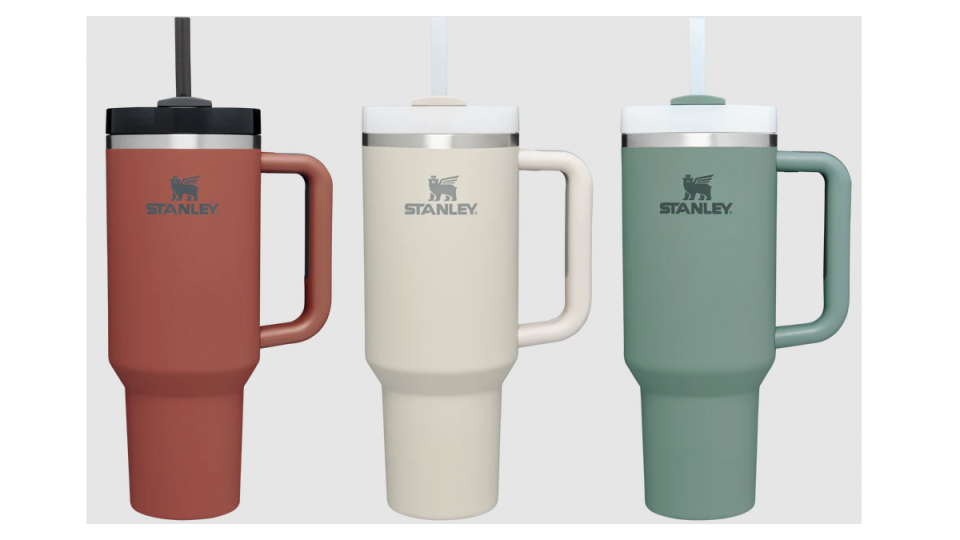Does your Stanley cup contain lead? What to know about the popular tumbler
Stanley cups have been gaining popularity all over the internet as the newest “it girl” tumbler.
After rising to prominence on Instagram and TikTok, these travel mugs have caused a lot of chaos in person as well. A video posted by TikTok user @victoria_robino_26 showed customers rushing into a Target store in Goodyear, Arizona, to get the Cosmo Pink and Target Red Valentine’s Day edition cups of the 111-year-old brand.
Now, in the app where the Stanley cup hype started, people are questioning the safety of these products.
Posts on TikTok are claiming that the insulated tumblers contain lead and people are performing at-home tests on them to check. Lead poisoning awareness advocate Lead Safe Mama made a breakdown of her findings.
So, what does this mean for the popular Stanley cup? Do they really contain lead, and can you still use yours?

What are Stanley cups?
Stanley cups are insulated tumblers that have gained popularity in recent years after being hyped by Instagram and TikTok influencers for their look and aesthetic. The brand was created by William Stanley Jr. and has been around since 1913.
The most popular version of the Stanley cup is The Quencher H2.O line.
Oftentimes you can see it as part of videos searching for the best water bottle, used to “make water” or being made fun of because of the cup’s impracticality.
Why are Stanley cups so popular?
Stanley's brand has been targeted toward blue-collar workers, outdoors people and just anyone looking for a road trip or adventure.
According to CNBC, in 2020 former Crocs executive Terence Reilly became the president of Stanley and leaned into social media and influencer marketing. This boosted the sales of the Quencher line.
This has led to at least 586,800 social media videos showing off the cup under #StanleyCup.
Is there lead in Stanley cups?
A dot of material containing lead is used in the bottom cap of the Stanley cups to insulate them. This is a standard sealing practice used in insulated drinkware.
Which Stanley cup has lead?
If you turn your Stanley cup over, you can see the circular cap on the bottom exterior. The lead is enclosed in stainless steel, which means it does not come in contact with the inside of your bottle or tumbler.
Videos testing the cups for lead often do it with the bottom part of the cup after removing the cap cover instead of the inside.
Are Stanley cups dangerous to use?
In a statement to USA Today, Stanley International said no lead is present on the surface of any Stanley product that comes in contact with you or the contents of your container.
The statement said all Stanley products meet U.S. regulatory requirements including California Proposition 65, which requires businesses to provide warnings to residents about heavy metal and chemical exposure.
"We seal our vacuum insulated stainless steel products with an industry-standard pellet that includes some lead,” the company said to USA Today. “The pellet is completely enclosed by a stainless-steel cover, making it inaccessible to users."
If the base cap of your cup comes off from ordinary use and exposes the seal, you can use Stanley’s Lifetime Warranty.
Can you put hot drinks in a Stanley cup?
If you are hoping to bring your coffee in your Stanley Quencher tumbler, it’s not clear whether the beverage will stay hot. Stanley's website says the iconic cups will keep drinks cold for 11 hours and iced for two days. However, it does not mention hot drinks.
The brand does have other mugs and cups that are specifically made for hot drinks.
Sold out: Stanley's exclusive Valentine's cup causes chaos at Arizona Target store. Here's a look
Why do Stanley cups leak?
Many videos show that the Stanley cups are not immune to leaking. The Quencher lid has three positions: a straw opening, a wide mouth for drinking and a full-cover top to prevent spills.
Customer reviews show that the full-cover top does not “seal well enough to fill in the hole, so it definitely spills liquid if turned over.”
Reach the reporter at dina.kaur@arizonarepublic.com. Follow @dina_kaur on X, formerly known as Twitter.
Support local journalism. Subscribe to azcentral.com today.
This article originally appeared on Arizona Republic: Which Stanley cups contain lead? What to know about popular tumblers

